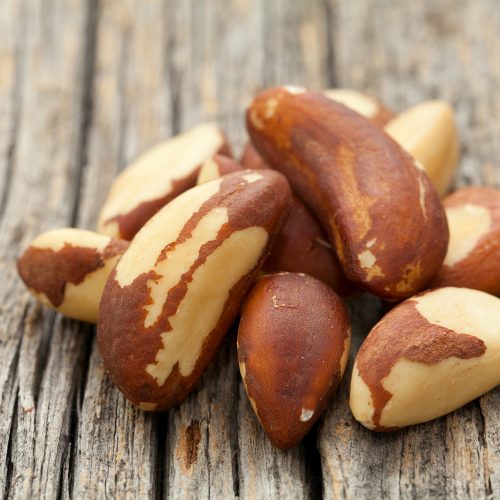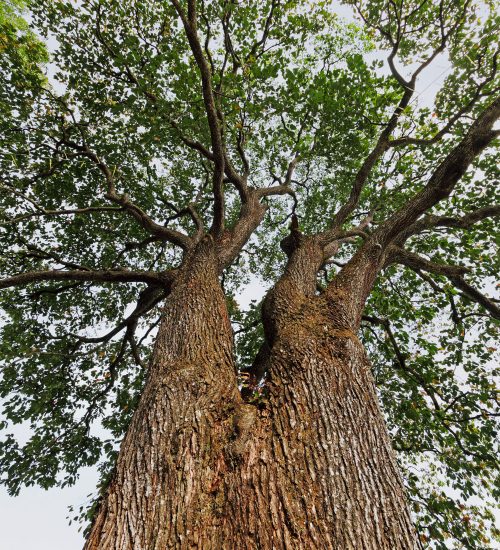Brazilnuts
The hard-walled fruit of the tree is 8-18cm in diameter and is globular in shape, resembling a large coconut. This woody capsule contains 8-24 nuts or seeds, which are arranged inside like sections of an orange. Each nut has a very hard shell and is three-cornered in shape. Brazil nuts are high in fat and protein and taste somewhat like almond or coconut. Brazil nuts are the richest natural source of selenium, a powerful antioxidant.
All efforts to plant the trees outside the Amazon region, e.g. in Malaysia, Sri Lanka, Indonesia and the West Indies, did not produce the expected results because the Brazil nut tree is part of a highly complex ecosystem. Only one type of bee can carry the pollen from one flower to another, and more important still, the male bee needs the Amazon forest for its survival. Chemicals produced by five different plants that grow only in the Amazon forest are necessary to allow its wings to glitter under the sun. When a group of males flock together, female queens are attracted to the glitter and they are then fertilized. Since there is a shortage of bees in artificial plantations, the crop is reduced. This also occurs when the forest around the Brazil nut trees is cut down.
During the period from January to June, the capsules ripen and fall to the ground, where they can be harvested. The nuts contained inside are then removed, dried by the sun, washed, and exported whilst still in their shell.
We source the best possible qualities available in Bolivia. In order to supply our client circle we maintain stock positions in Rotterdam to guarantee tailor-made deliveries throughout the year.

